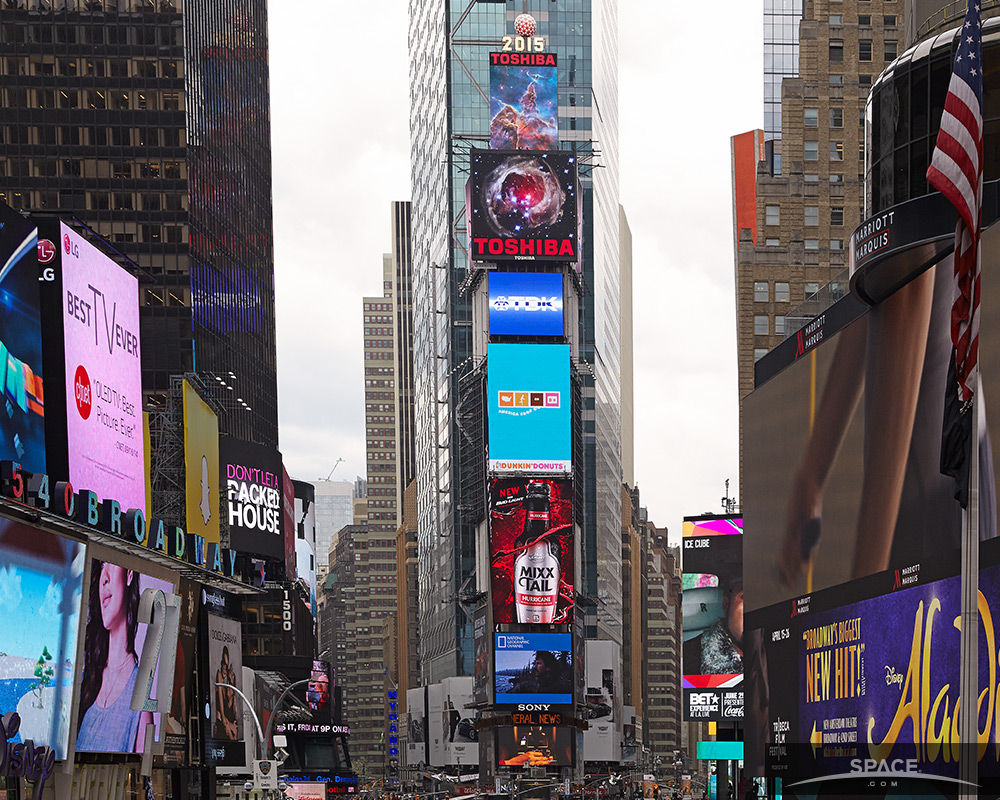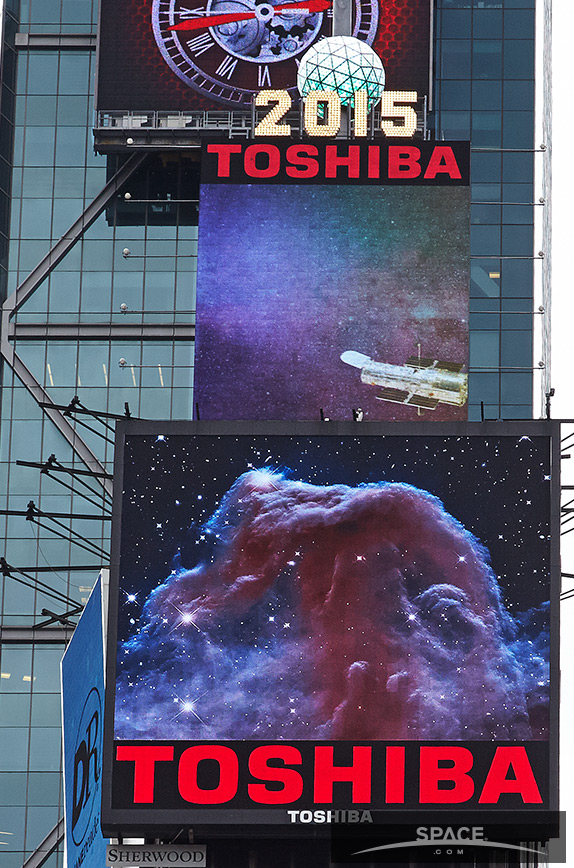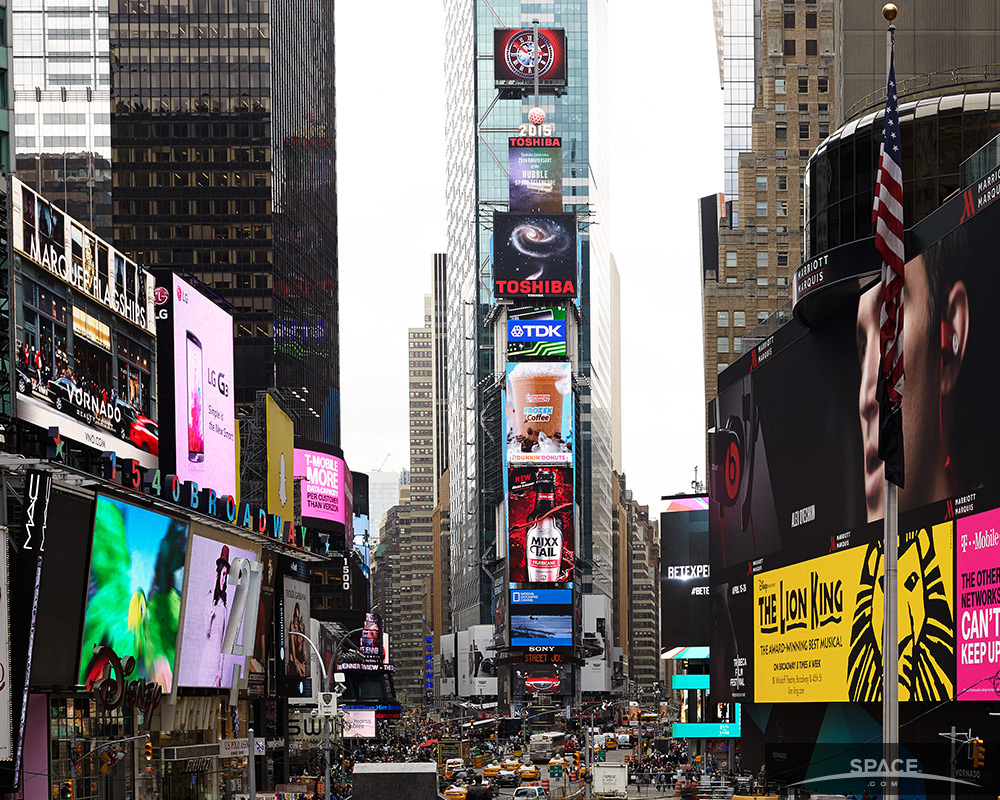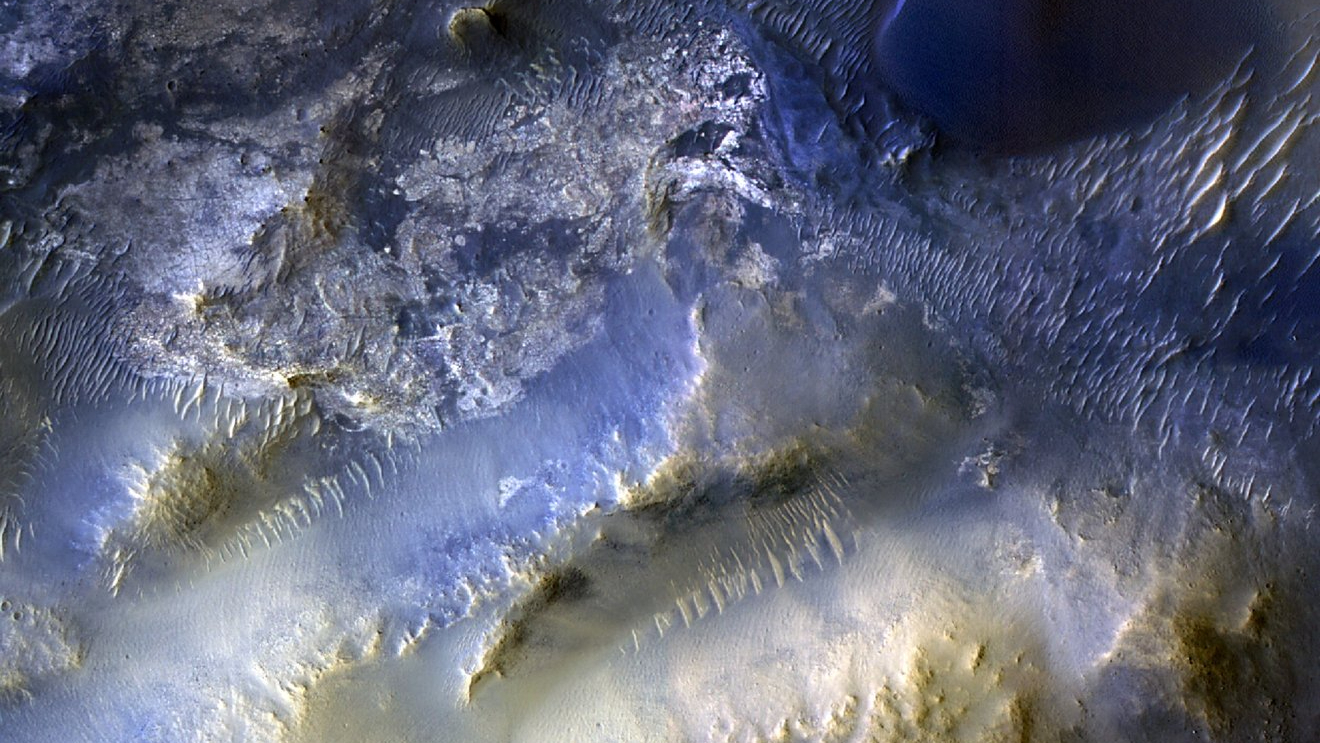Awesome Hubble Telescope Pics Pop on Times Square Screens in NYC

Advertisements hawking clothing, smart phones and theater tickets usually overwhelm New York City's Times Square — but look closely this week and you'll also see exploding stars, whirling galaxies and bubbling nebulas.
In celebration of the 25th anniversary of the launch of the Hubble Space Telescope, The Toshiba Vision screen in Times Square is displaying awe-inspiring images taken by Hubble, as well as a few snapshots of the telescope itself.
The pictures appear every four to five minutes on the two massive screens that rest just beneath the famous New Year's Eve ball. This isn't the first time the Toshiba screens have broadcast amazing images from space.
Among the featured photographs is one of the Horsehead Nebula: a puffy gas cloud that appears to curl in on itself like an ocean wave. The horse-like feature is actually part of a larger nebula that lies 1,500 light years from the sun in the Orion constellation.
Another image shows the bright red heart of V838 Monocerotis, a once-dull star that suddenly became 600,000 times more luminous than the sun. The rapid brightening, which took place in January 2002, is what astronomers call a "light echo," in which the light from a stellar explosion reflects off a cloud of dust surrounding it.
In August 2012, the Toshiba Vision screen also broadcast the Mars rover Curiosity's touchdown on the Red Planet. The company then continued to broadcast images from the rover through October of that year. On January 1, 2014, the same screen showed astronauts aboard the International Space Station delivering a New Year's greeting.
Hubble was launched in 1990, and was the first optical telescope to operate above Earth's atmosphere, which blurs optical light to such a degree that ground-based optical astronomy was severely limited. Five crewed repair missions have kept Hubble going for 25 years, and NASA does not have a set date for when Hubble will stop operating. Hubble could have many more years of discoveries ahead of it.
Breaking space news, the latest updates on rocket launches, skywatching events and more!
Follow Calla Cofield @callacofield.Follow us @Spacedotcom, Facebook and Google+. Original article on Space.com.

Calla Cofield joined Space.com's crew in October 2014. She enjoys writing about black holes, exploding stars, ripples in space-time, science in comic books, and all the mysteries of the cosmos. Prior to joining Space.com Calla worked as a freelance writer, with her work appearing in APS News, Symmetry magazine, Scientific American, Nature News, Physics World, and others. From 2010 to 2014 she was a producer for The Physics Central Podcast. Previously, Calla worked at the American Museum of Natural History in New York City (hands down the best office building ever) and SLAC National Accelerator Laboratory in California. Calla studied physics at the University of Massachusetts, Amherst and is originally from Sandy, Utah. In 2018, Calla left Space.com to join NASA's Jet Propulsion Laboratory media team where she oversees astronomy, physics, exoplanets and the Cold Atom Lab mission. She has been underground at three of the largest particle accelerators in the world and would really like to know what the heck dark matter is. Contact Calla via: E-Mail – Twitter


